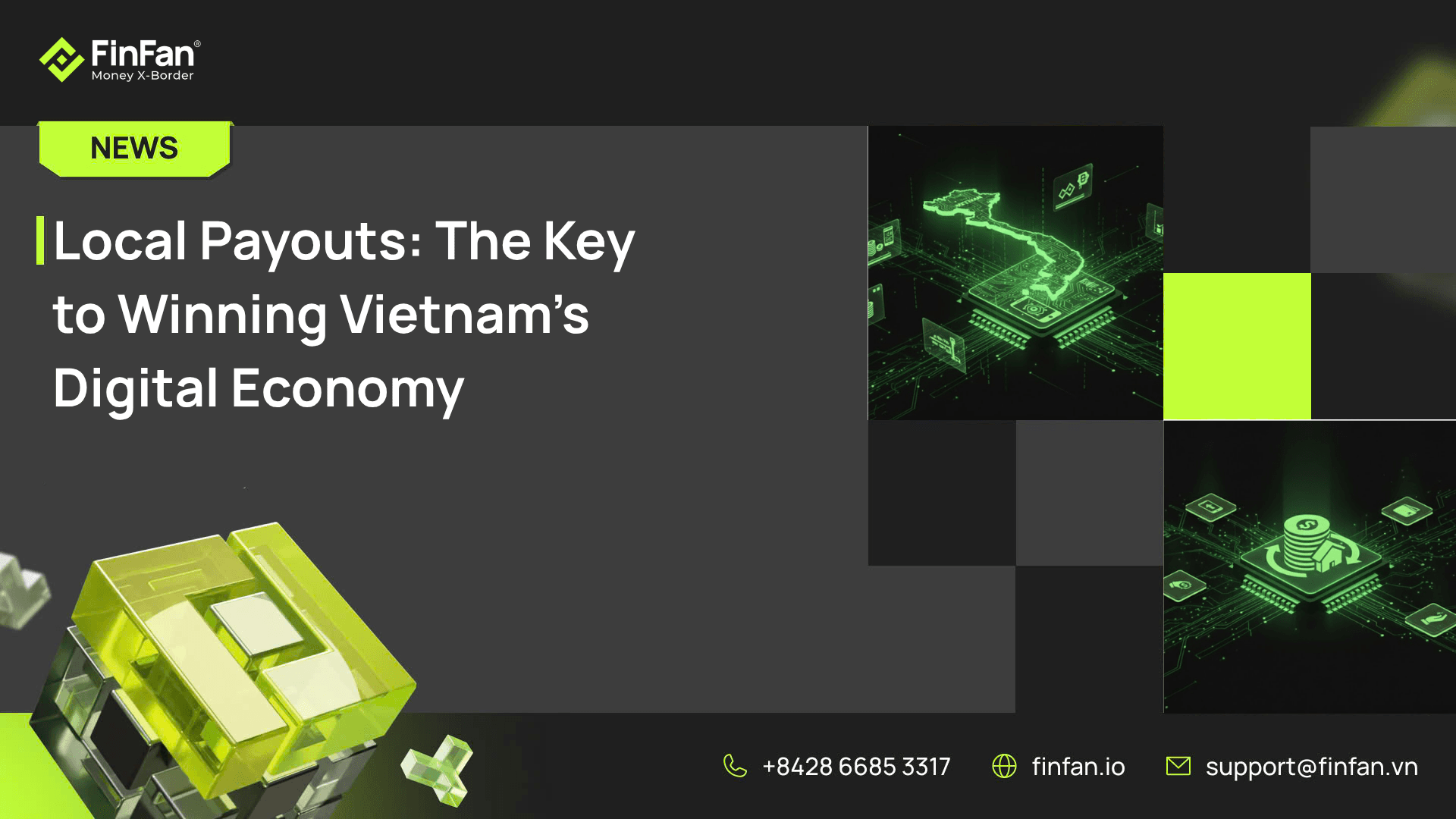Top 5 international e-commerce payment processing

In the era of technological development, ecommerce also grows and makes amazing strides. Therefore, ecommerce payment processing needs to be updated to meet the requirements of users.
What is ecommerce payment processing? How does it work? Let’s find out the answer with FinFan.
What is ecommerce payment processing?
During the online shopping process, customers will go through the steps.
-
Searching for products on the internet.
-
Select the items that they want to buy.
-
Paying for the bill through the payment gateway.
In step 3 of the online shopping process, payment processing will be activated. That helps payment to be faster.
There are three elements of eCommerce payment processing, including:
-
Payment gateway: an online payment service integrated into the eCommerce platform through which customers can make payments for online purchases.
-
Payment processor: a company that communicates with and puts money in your merchant account on behalf of customers.
-
Merchants accounts: It is the gateway that talks to your bank. The store’s gateway connects to the merchant account and it charges the customer’s payment information directly.
How does ecommerce payment processing work?
Here are 5 steps of ecommerce payment processing.
Step 1: Open the payment gateway.
Customers can pay for many reasons: buying a present, paying a bill, making an online donation, etc. When they come to the third step of the shopping process, they need to choose their payment methods through payment gateways.
Step 2: Communicate payment processor.
The encrypted payment details are sent to the payment processor via the payment gateway once they click the button to submit the information.
Step 3: Authorized or rejected.
The payment information will be encrypted by the payment processor. After this encryption, the data will be handled, and let the payment processor know if the payer can be eligible to pay or not to make the final decision either authorize or reject the payment.
Step 4: Notify the successful transaction.
If the transaction is authorized, the merchant’s website will receive a notification from the gateway. But at this point, funds from the transaction haven’t shown up in the merchant account yet. We need a final step.
Step 5: Credit the account
Within a few days, the money from customers officially appears in your account. The customer receives a receipt or order confirmation if the transaction is approved, and the funds are deducted from the client’s available credit or bank account and deposited into the merchant’s bank account.
Top 5 international e-commerce payment processing
Paypal
Paypal is one of the most well-known and well-established methods of online money transfer. It is available in a variety of countries and supports over 25 different currencies. The Payflow gateway from Paypal is simple to set up and has no monthly costs. It accepts credit cards, has a digital wallet, and even offers loans.
Amazon Pay
Amazon Pay is also the best eCommerce gateway for mobile platforms. With this eCommerce payment solution, merchants can process both online and offline payments on their smartphones.
The transaction is immediate and can be done without any registration. The eCommerce payment processing uses tap-to-pay technology which is a peer-to-peer approach.
To use the Amazon Pay services, you need an Amazon Payments account. It has provided all the requirements of eCommerce merchants like billing address, business and its owners’ information.
Stripe
Stripe works with some of the country’s most well-known B2C, SaaS, and product companies. There are no monthly fees, but processing fees are calculated based on the transaction size. They can handle high transaction volumes and provide good integration and support.
With our Stripe extension, you can easily integrate this payment gateway into your website. It provides a fast and simple checkout process and secures online payment with PCI DSS and PSD2 Compliance.
2Checkout
Unlike Stripe, 2Checkout is available in a wide range of countries and is one of the most cost-effective payment processors available. They offer both hosted and in-line shopping carts. However, the API is complicated, making integration with eCommerce platforms difficult.
FinFan
FinFan, a NEOBank specializing in cross-border payment and money transfer in Vietnam, had a License of Foreign Currencies Acceptance and Payment approved by the Central Bank of Vietnam in 2014, licensing from our Strategy Bank to do Banking services, and was the first entity in Vietnam allowed to disburse money into E-wallet.
We operate based on the values of transparency and trustworthiness to provide products as a NEOBank, such as CASH – IN & CASH –OUT (Payroll, e-Commerce, Import-Export, etc., Cross - Border Payment (Over 150 countries + currencies), Remittances (strong currencies like GBP, AUD, EUR, USD, CNY with competitive FX rate), Virtual Cards.
We are proud that we not only became the first Vietnamese non-bank partnered and integrated with Ripple Net but also partnered with over 20 top global brands as MoneyGram, Thunes, Remitly, Ria, Terrapay, PaySend, etc.
This article was curated and authored by FinFan's market research and development team, alongside our marketing department.
About FinFan
FinFan is a cross-border embedded financial services company that focuses on mass disbursement, fund collection, card processing, IBAN, and digital APMs solutions, which can provide valuable input and integration on and for the same.
FinFan is already integrated with almost the world's well-known MTOs, PSPs, switch, and core fintech platforms such as Money Gram, Thunes, Qiwi, Remitly, World Remit, Bancore, PaySend, Terrapay, Ria Money Transfer (Euronet), Dlocal, Ripple, TripleA, FoMo Pay, Wings, etc.
For more information, please get in touch with us through:
🌐https://finfan.io
📞(+84) 2866 85 3317
✉ support@finfan.vn
LinkedIn: FinFan





